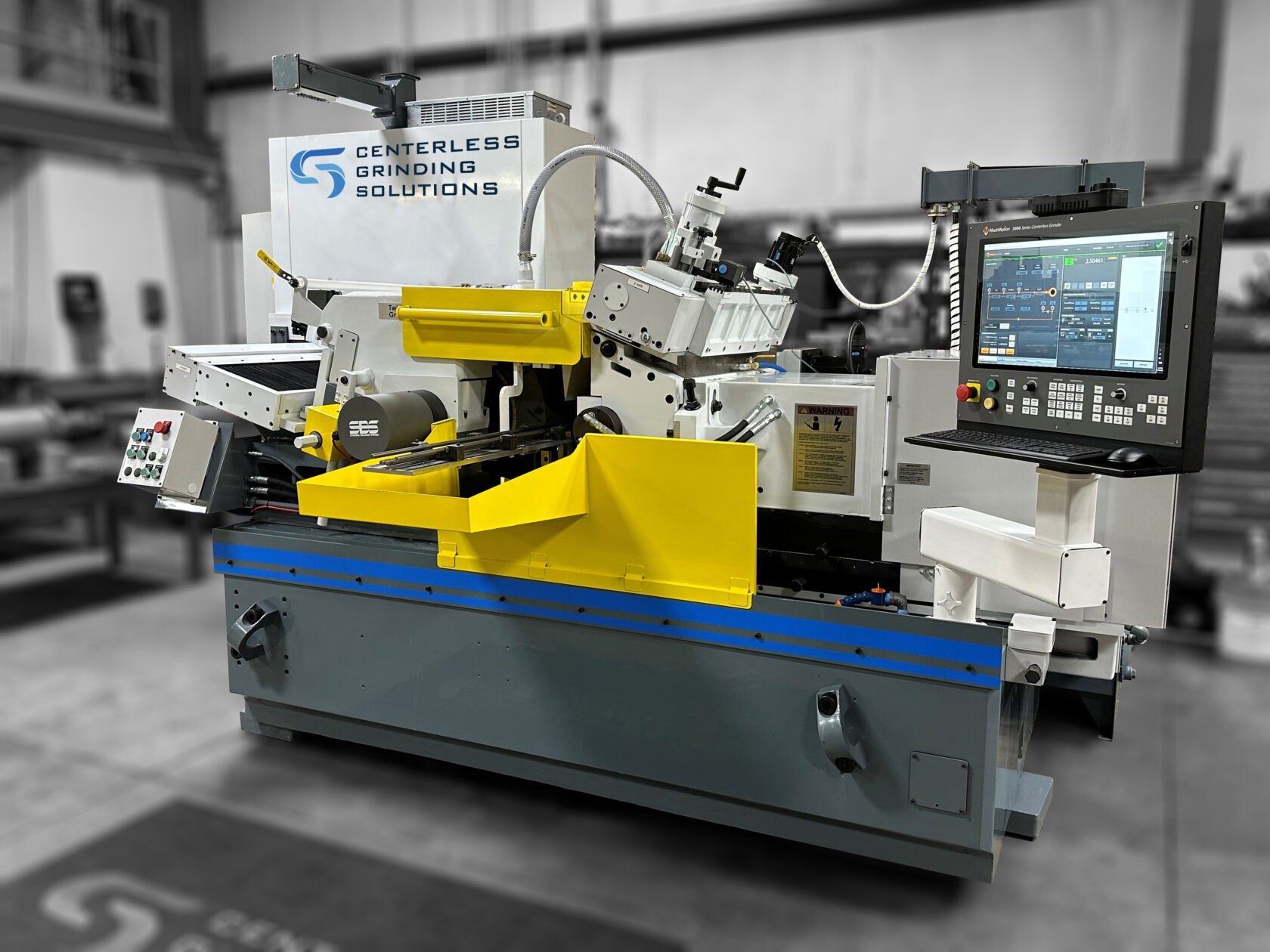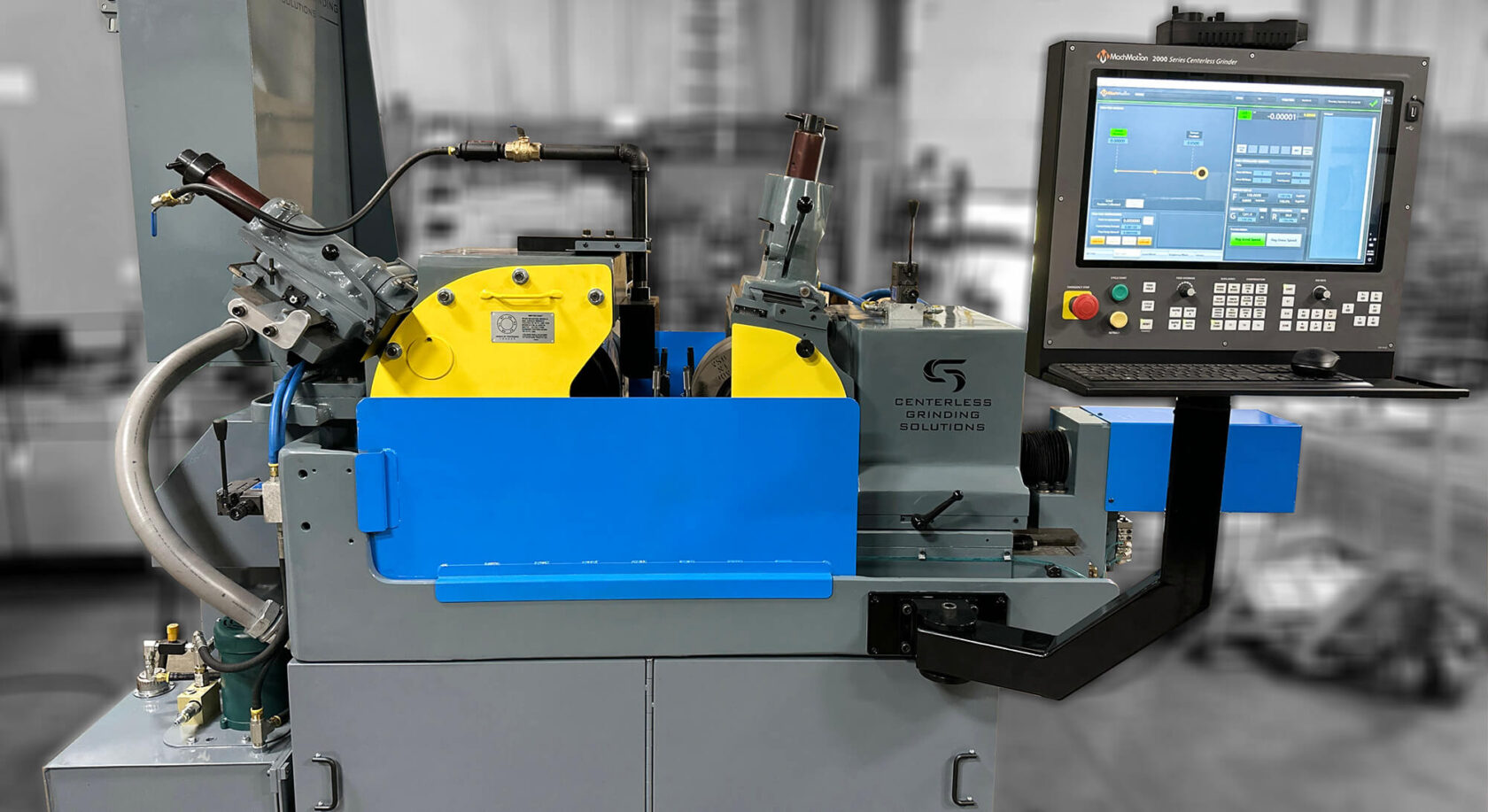
Comparing Centerless Grinder Maintenance Costs: In-House vs. Professional Services
Metal shavings scatter across your workspace as your centerless grinder hums, transforming raw materials into precision-engineered components. But beneath that steady rhythm lies every manufacturer’s crucial decision: how to maintain these sophisticated machines efficiently and cost-effectively.
Whether to establish an in-house maintenance program or partner with professional service providers impacts your immediate bottom line and the long-term success of your entire operation. Centerless grinding maintenance is becoming increasingly complex, particularly for advanced systems like Cincinnati Milacron grinders, so making the right choice requires careful consideration of multiple factors.
This guide examines maintenance approaches’ actual costs and practical implications, helping you evaluate which solution best aligns with your operational needs and resources. From personnel requirements to specialized tooling, we’ll explore every aspect that influences your maintenance strategy’s effectiveness.
In-House Maintenance: A Close Look at the True Costs
Taking control of your centerless grinder maintenance in-house requires a financial commitment beyond basic tools and training. Your maintenance team needs specialized expertise in spindle assembly repair, wheel dressing, and precision alignment, skills that demand a significant investment of time and resources.
Personnel Investment
Building an in-house maintenance team starts with hiring experienced technicians or upgrading your existing staff’s capabilities. Beyond base salaries, consider the ongoing costs of specialized training programs, certification requirements, and continuing education to keep pace with evolving grinding technology. Your team must understand basic maintenance procedures, complex troubleshooting, and repair techniques for centerless grinding systems.
Equipment and Infrastructure Requirements
The toolkit for proper centerless grinding maintenance goes well beyond standard workshop equipment. You’ll need precision measurement instruments, specialized alignment tools, and diagnostic equipment – all requiring regular calibration and maintenance. Additionally, you’ll need a dedicated workspace for maintenance operations, proper storage for spare parts, and environmental controls to maintain optimal conditions for sensitive equipment.
Hidden Operational Impacts
Production schedules often face unexpected extensions when your maintenance team tackles complex repairs. Even routine maintenance can lead to more extended downtimes as less experienced staff work through procedures that specialized technicians might complete more efficiently. These delays cascade through your production schedule, potentially affecting delivery commitments and customer satisfaction.
Professional Maintenance Services: Expertise on Demand
Professional centerless grinding maintenance services bring decades of collective experience to your shop floor. These specialists arrive with tools and deep knowledge of common issues, preventive measures, and optimization techniques that can extend your equipment’s lifespan while minimizing operational disruptions. Their focused expertise with specific systems, particularly Cincinnati Milacron grinders, ensures your equipment receives manufacturer-standard care.
Expert Knowledge at Your Service
Professional technicians work exclusively with grinding equipment, encountering and resolving diverse maintenance challenges daily. Their work across multiple facilities exposes them to various operational scenarios and equipment variations, building an extensive knowledge base that benefits every client. This broad experience enables them to identify unusual wear patterns quickly, recognize early warning signs of potential failures, and implement preventive measures before minor issues become major problems.
Even small misalignments can significantly impact part quality when dealing with precision equipment like centerless grinders. Professional technicians understand these subtle relationships and can make precise adjustments that optimize performance. Their expertise extends beyond basic maintenance, including performance enhancement, troubleshooting complex issues, and providing operator training to maintain optimal running conditions.
Efficiency Through Advanced Resources
Professional maintenance providers invest heavily in state-of-the-art diagnostic equipment and specialized tools that might be cost-prohibitive for individual facilities. Their mobile service units arrive fully equipped with the following:
- Advanced alignment and calibration equipment
- Specialized diagnostic tools for vibration analysis
- Precision measurement instruments
- Comprehensive parts inventories for common repairs
This level of preparation eliminates diagnostic guesswork and reduces the time needed to complete maintenance tasks. Modern diagnostic equipment can detect issues invisible to the naked eye, allowing technicians to address problems before they cause visible defects in your products.
Strategic Scheduling and Support
Professional services often offer flexible scheduling options that align with your production demands. Many providers develop customized maintenance programs that include:
- Regular preventive maintenance visits
- Emergency response protocols
- Detailed documentation of all service work
- Performance trend analysis
- Operator training sessions
- Equipment optimization recommendations
The relationship with a professional service provider extends beyond individual maintenance visits. They become partners in maintaining your equipment’s optimal performance, offering ongoing support and guidance for your operators. This partnership approach helps prevent issues through early intervention and ensures your team understands proper operating procedures between maintenance visits.
Quality Assurance and Documentation
Professional maintenance services typically maintain detailed service records and provide comprehensive reports after each visit. These documents serve multiple purposes:
- Creating a maintenance history for each machine
- Tracking performance trends over time
- Documenting completed work and recommendations
- Supporting ISO certification requirements
- Providing evidence for warranty claims when needed
This systematic approach to documentation helps you make informed decisions about future maintenance needs and equipment replacement timing.
Key Factors in Your Maintenance Decision
Choosing between in-house and professional maintenance requires careful evaluation of your specific operational context. Your decision impacts maintenance quality, production workflow, and long-term equipment reliability. Let’s explore each critical factor in depth.
Equipment Complexity and Usage Patterns
Modern centerless grinders, particularly advanced systems, demand increasingly sophisticated maintenance approaches. Your maintenance strategy should align with both your equipment complexity and operational demands:
Production Volume Considerations:
- Multi-shift operations require more frequent maintenance interventions
- High-precision work demands more frequent calibration checks
- Heavy usage accelerates wear on critical components
- Complex grinding operations need more frequent wheel dressing and alignment
Equipment Sophistication:
- Newer models with electronic controls need specialized diagnostic equipment.
- Integrated automation systems require additional expertise
- Multiple machine types increase the knowledge base needed
- Legacy equipment might require specialized knowledge less common among current technicians
Technical Capability Assessment
Take a realistic look at your current technical capabilities by considering both present skills and future requirements:
Current Team Evaluation:
- Assessment of existing maintenance staff expertise
- Capability to handle emergency repairs
- Knowledge of specific machine models and controls
- Understanding of precision measurement and calibration
Future Needs:
- Training requirements for new equipment
- Succession planning for experienced staff
- Ability to keep pace with technological advances
- Resources needed for ongoing skill development
Operational Impact Analysis
Evaluate how maintenance decisions affect your broader operations through several key lenses:
Production Schedule Impact:
- Flexibility needed for maintenance times
- Cost of planned vs. unplanned downtime
- Impact on customer delivery commitments
- Ability to build maintenance buffers into production schedules
Quality Assurance:
- Consistency of maintenance quality
- Documentation requirements for quality certifications
- Traceability of maintenance procedures
- Impact on part quality and rejection rates
Resource Allocation:
- Budget considerations for different maintenance approaches
- Space requirements for maintenance activities
- Tool and equipment investment needs
- Inventory management for spare parts
Making the Right Choice: Balancing Cost and Capability
The optimal approach to centerless grinding maintenance often combines in-house and professional services. Your in-house team handles daily monitoring and basic maintenance while professional expertise addresses complex repairs and precision adjustments. This balanced strategy helps you maintain equipment reliability while managing costs effectively.
Conclusion
The path to optimal centerless grinding performance requires strategic maintenance planning that aligns with your operational demands. Through decades of experience servicing Cincinnati Milacron grinders and other precision equipment, we’ve witnessed how the correct maintenance approach directly impacts productivity and part quality.
Every manufacturing facility faces unique challenges and operational requirements. Whether running multiple shifts or handling specialized grinding applications, Centerless Grinding Solutions’ expert technicians bring unmatched expertise to your maintenance needs.
Ready to elevate your centerless grinding maintenance program? Contact Centerless Grinding Solutions today for a comprehensive assessment. Our specialized team will create a customized maintenance solution that ensures peak performance while protecting your investment.

